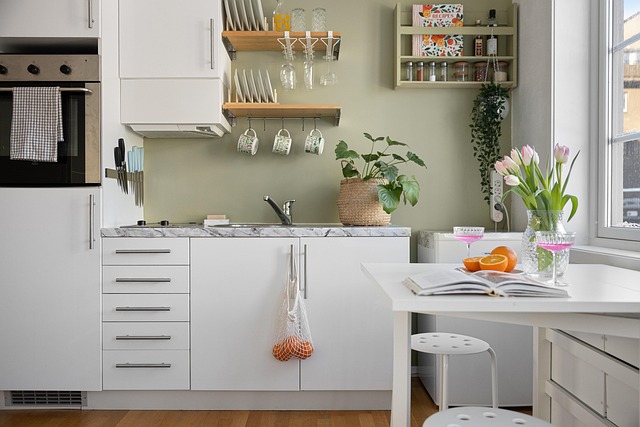Strategically assess and plan your small space before making design changes. Start by decluttering, questioning the value of each item, and identifying underutilized storage areas. Use multi-functional pieces, keep similar items together, and maintain easy access to frequently used items. Measure and create a floor plan for informed furniture placement decisions. Implement a "one-in, one-out" rule for continuous decluttering and organization. These decluttering tips enhance storage efficiency, fostering openness and calm in your living area.
“Unleash the power of minimalism in your small spaces! This comprehensive guide offers practical design tips to transform your compact abode. From assessing and planning, where understanding your space leads to optimization, to essential decluttering tips that teach you to let go to gain more. Discover innovative storage solutions, master light manipulation for visual appeal, and learn how to create a calm, inviting atmosphere. Embrace simplicity and unlock the secret to maximizing every inch.”
Assess and Plan: Understanding Your Space
Before implementing any design changes, take time to assess and plan your space strategically. Start by decluttering – get rid of items you no longer need or use. This step is crucial in maximizing available room. Empty spaces allow for better visualization of how each area can be utilized efficiently.
Once decluttered, create a detailed plan. Consider the layout, functionality, and flow required for your daily activities. Think about where furniture should go to optimize space while ensuring comfort and accessibility. A well-planned layout ensures every corner of your small space contributes to a practical, organized, and visually appealing environment.
– Identify storage options and potential areas for optimization
When it comes to maximizing small spaces through minimalist design, identifying efficient storage solutions is key. Start by assessing what you have and what you need. Implement decluttering tips such as going through each item and asking yourself if it brings value or purpose to your life. This process will help uncover underutilized areas where extra storage can be incorporated. For instance, consider vertical spaces like empty walls for shelves or hanging organizers, and built-in solutions like drawers or cabinets tailored to the unique dimensions of your room.
Optimizing storage doesn’t stop at furniture choices; it also involves strategic organization. Utilize multi-functional pieces that combine storage with other purposes, such as a coffee table with hidden compartments or a bed with integrated drawers. Embrace minimalism by storing similar items together and keeping frequently used items within arm’s reach. This approach not only keeps your space tidy but also makes the most of every available inch, ensuring your small space feels open, inviting, and stress-free.
– Measure and create a floor plan to visualize the layout
Before you begin organizing your small space, taking the time to measure and create a floor plan is essential. This simple step allows you to visualize the layout and make informed decisions about where furniture should go. It’s also a great decluttering tip—assessing each item’s placement and necessity in relation to the room’s overall structure.
By sketching out your space, you can easily identify areas that may be better served by different arrangements or even alternative uses. For instance, a narrow alleyway could become a stylish passage connecting two rooms, while an unused corner might transform into a cozy reading nook with clever storage solutions incorporated into the design.
Decluttering Tips: Letting Go to Gain More
Decluttering is an essential step in maximizing small spaces. Start by letting go of items that are no longer needed, used, or bring value to your life. This process can be challenging, but it’s crucial for creating a sense of openness and calm in your space. Consider adopting the “one-in, one-out” rule, where whenever you bring in a new item, you get rid of an old one. This ensures a continuous cycle of refreshing and organizing your space.
Implementing decluttering tips like these will not only reduce clutter but also make it easier to maintain a clean and organized environment. By letting go of unnecessary items, you create more storage space, making it simpler to store and access what you truly need. Ultimately, this results in a more functional and aesthetically pleasing living area.
By carefully assessing and planning your small space, along with implementing effective decluttering tips, you can transform it into a functional and inviting area. Minimalist design principles focus on simplicity and maximizing every inch, ensuring your belongings serve a purpose. Through thoughtful organization and clever storage solutions, you’ll find that a well-designed small space offers ample comfort and style without feeling cramped.
